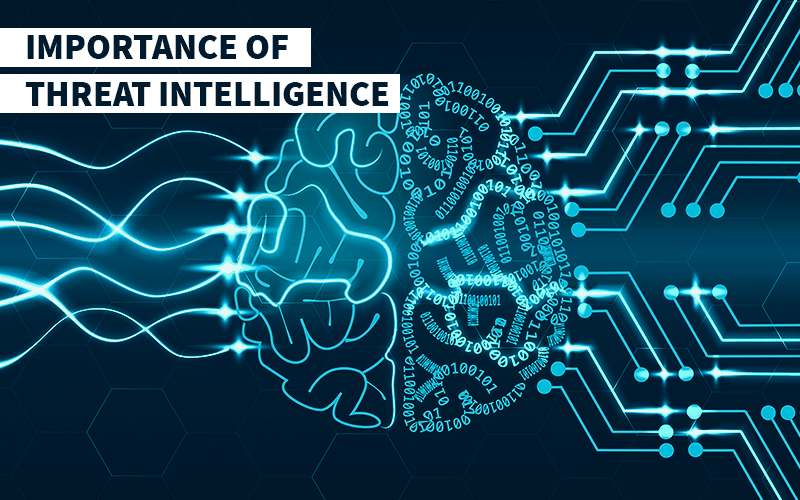
Cyberattacks can wreak havoc on businesses, governments, and individuals, leading to significant financial losses, reputational damage, and compromised data.
In response to this escalating threat landscape, operational cyber threat intelligence has risen as an indispensable component in cybersecurity.
This article revolves around operational cyber threat intelligence, its significance in identifying and mitigating cyber threats, and its role in enhancing cybersecurity defenses in a hyperconnected world.
It involves collecting, analyzing, and disseminating real-time information about potential and ongoing cyber threats to an organization’s network and systems.
It goes beyond standard security measures by providing proactive insights into emerging threats, tactics, techniques, and procedures (TTPs) employed by malicious actors, and actionable intelligence to prevent and respond to cyber incidents effectively.

The Significance of Operational Cyber Threat Intelligence
It plays a crucial role in today’s cybersecurity landscape. Here are some key reasons why it is indispensable:
Early Detection of Threats
>By continuously monitoring cyber activities, operational cyber threat intelligence can detect potential threats and cyberattacks early. This proactive approach allows organizations to take immediate action to prevent or minimize the impact of an attack.
Targeted and Precise Response
With insights into threat actor TTPs and motivations, organizations can tailor their response to specific cyber threats. This targeted approach improves the efficiency of incident response and reduces the risk of collateral damage during mitigation efforts.
Real-Time Awareness
It provides real-time awareness of emerging threats and vulnerabilities. It empowers organizations to stay ahead of cybercriminals and take preventive measures promptly.
Intelligence Sharing and Collaboration
It encourages information sharing and collaboration among organizations and cybersecurity stakeholders. This collective effort strengthens the global cybersecurity community, making it harder for threat actors to operate with impunity.
See here: ODNI Cyber Threat Framework
The Lifecycle of Operational Cyber Threat Intelligence
The process of operational cyber threat intelligence involves several stages.
Collection
It begins with data collection from diverse sources, including open-source intelligence (OSINT), closed sources, dark web monitoring, and proprietary threat feeds. Automated tools and manual analysis gather relevant data points for further examination.
Analysis
During the analysis phase, collected data is processed and contextualized to identify potential threats and trends. Advanced analytics and machine learning algorithms help identify patterns and indicators of compromise (IOCs) used by threat actors.
Enrichment
Enrichment involves adding relevant context to the analyzed data. It could include information about the threat actor’s motivations, affiliations, and historical activities. Enriched intelligence enhances the accuracy and relevance of the threat information.
Validation
To ensure the accuracy and reliability of the intelligence, it undergoes rigorous validation and cross-referencing against multiple sources. False positives are minimized during this validation process.
Dissemination
The final step involves disseminating actionable intelligence to relevant stakeholders, such as IT security teams, incident response teams, and executive leadership. Timely and precise intelligence allows for effective decision-making and response.
Leveraging Operational Cyber Threat Intelligence
To fully harness the potential of operational cyber threat intelligence, organizations should adopt the following best practices:
Invest in Advanced Analytics
Employing advanced analytics and machine learning capabilities can help organizations process vast amounts of data quickly and identify complex threat patterns that may evade traditional security measures.
Foster Information Sharing
Encourage collaboration and information sharing within the cybersecurity community. Participation in threat intelligence sharing platforms and forums enables organizations to benefit from collective knowledge and experiences.
Integrate Threat Intelligence into Security Operations
Integrate it into the organization’s security operations to enhance incident response capabilities. Automated threat intelligence platforms can be integrated with Security Information and Event Management (SIEM) systems to streamline the response process.
Conduct Regular Threat Hunting
Proactive threat-hunting initiatives can complement operational cyber threat intelligence by identifying hidden or persistent threats that may not be detected by automated tools alone.
Train Employees on Threat Awareness
Educate employees about the latest cyber threats, social engineering tactics, and best practices for cybersecurity hygiene. An informed and vigilant workforce is an organization’s first line of defense against cyberattacks.
Check out the Cyber Threat Intelligence Job Description
The Future Operational Cyber Threat Intelligence
As cyber threats progress toward greater complexity and sophistication, the future of operational cyber threat intelligence is promising. Several prominent trends poised to influence its progression encompass:
Integration of Artificial Intelligence (AI)
AI and machine learning technologies will improve the speed and accuracy of threat intelligence analysis, enabling organizations to respond more effectively to emerging threats.
Increased Collaboration and Information Sharing
The global cybersecurity community will increasingly collaborate and share intelligence to defend against cyber threats collectively.
Automation and Orchestration
Automation and orchestration capabilities will streamline threat intelligence workflows, enabling faster and more efficient responses to cyber incidents.
Focus on Threat Predictions
It will evolve to provide predictive insights, helping organizations anticipate potential threats and vulnerabilities before they materialize.
Conclusion
It is a critical asset in the fight against cyber threats in today’s hyperconnected world. Providing real-time awareness, early detection, and targeted responses to cyber incidents enables organizations to fortify their cybersecurity defenses effectively.
Organizations must embrace an integral part of their cybersecurity strategy to stay ahead in the ongoing battle against cyber adversaries.
By investing in advanced analytics, fostering information sharing, and integrating threat intelligence into security operations, organizations can effectively navigate the ever-evolving cyber threat landscape and protect their digital assets and data from malicious actors.
Leave a Reply